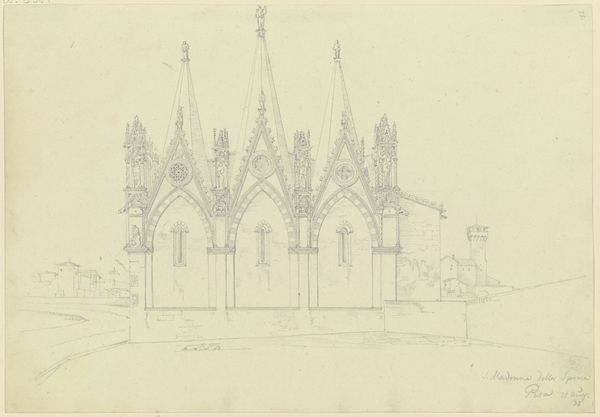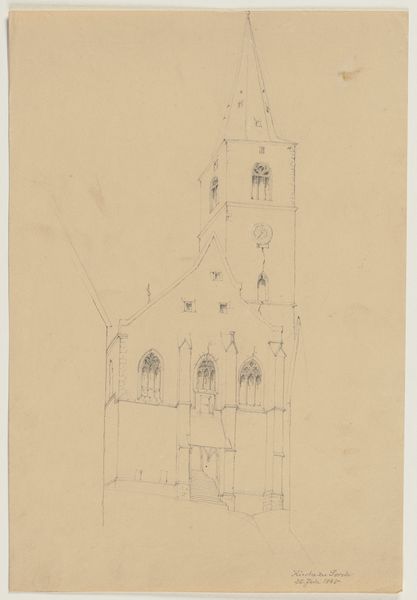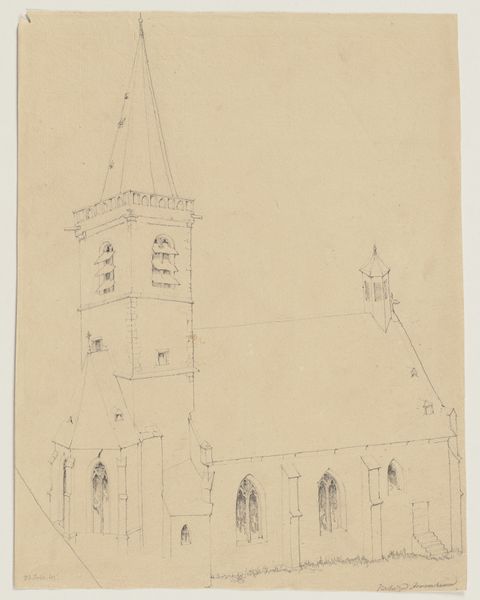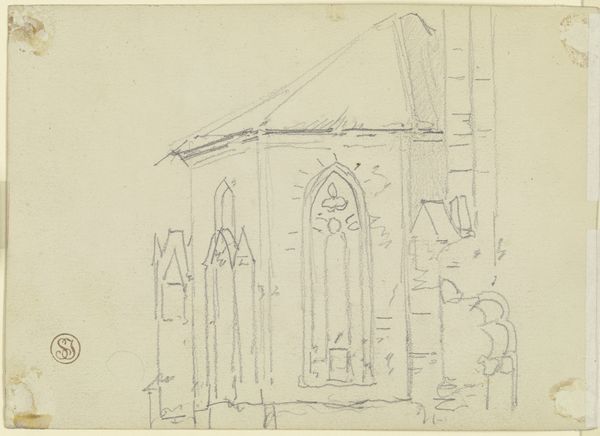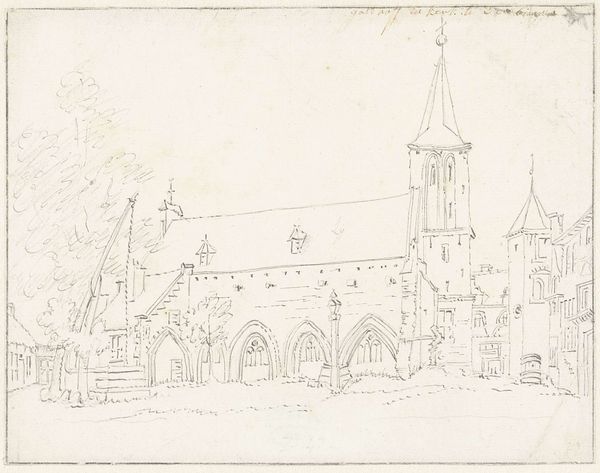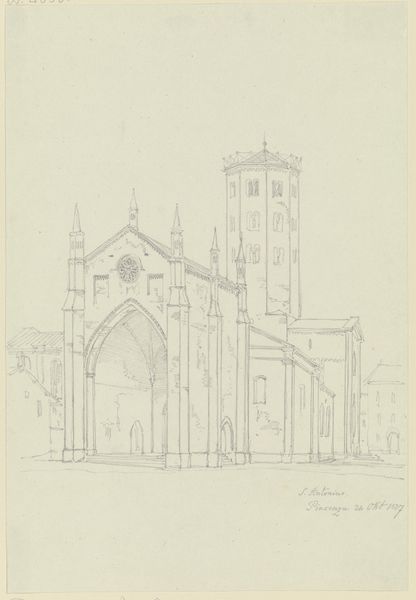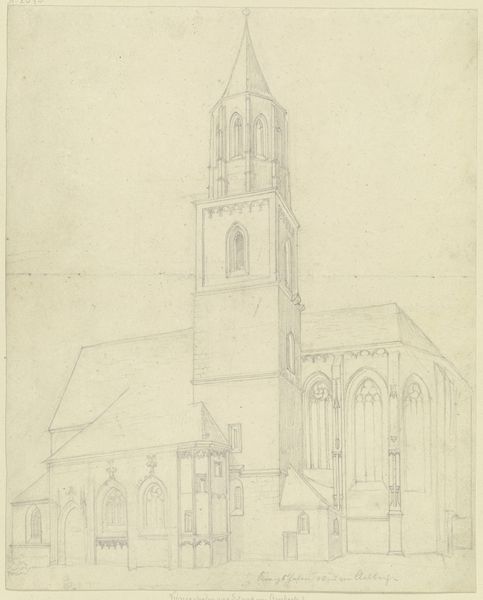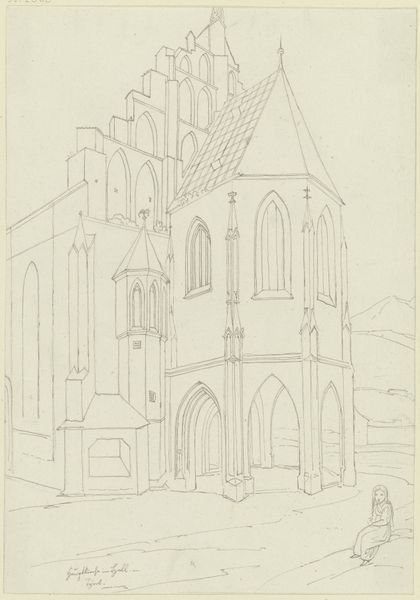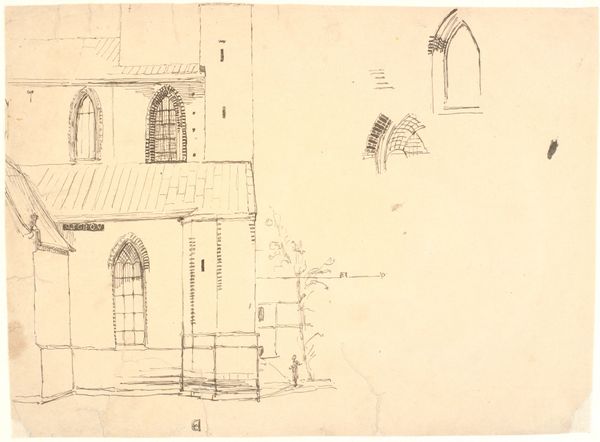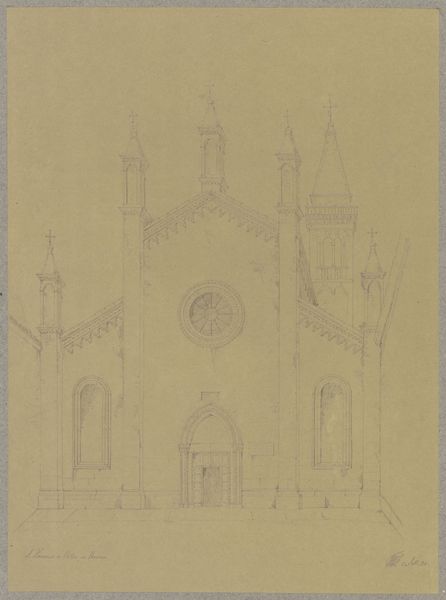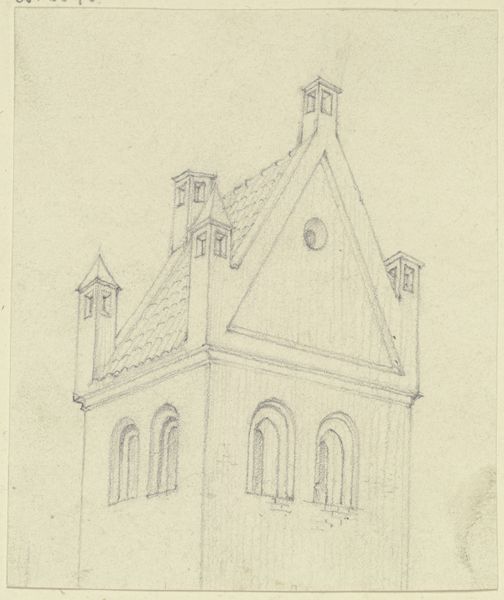
drawing, pencil, architecture
#
drawing
#
landscape
#
pencil
#
architecture
#
realism
Copyright: Public Domain
Curator: This pencil drawing, rendered sometime in 1845 by Friedrich Wilhelm Ludwig, depicts Saint Michael in Kiedrich, capturing the intricate details of the architecture. What's your immediate impression? Editor: Austere and exacting. The rigid, unyielding lines emphasize the grandeur, but also the rigidity, of religious architecture, evoking a certain kind of historical power and, perhaps, oppression. Curator: It's true that the starkness of the pencil on paper highlights a particular austerity. Consider the socio-political context: the Gothic Revival was gaining momentum, with architects and patrons looking back to a medieval past that they imagined as ordered and pious. Works such as this participated in that collective imagining. Editor: Right, and we have to examine the ways that architectural projects served as tangible demonstrations of control. Ludwig focuses not on community gathering spaces but the precise lines of the tower and roof, symbolizing perhaps the watchful authority and imposing presence of the Church. I’m compelled to think of the communities impacted and controlled by structures like these. Curator: Indeed, the architectural elements underscore the symbolic authority of the church in daily life. Notice the precision in the window tracery, or the almost obsessive detail given to the tower—elements which demonstrate the artist’s ability to reproduce architecture and therefore underscore its status. Editor: The use of pencil, rather than a more expressive medium, also suggests a desire for accuracy, for a seemingly objective portrayal of power. It mutes potential narratives of local agency. Curator: Yes, it reinforces this sense of cool observation, a remove that's in keeping with the prevailing artistic sensibilities emphasizing realistic representation. What can appear missing, then, in the historical landscape and representation? Editor: The voices, labor, and perspectives of the common people who built and were governed by this architectural marvel. So, while aesthetically captivating, we must remember this structure had sociopolitical impacts on many. Curator: This conversation has allowed us to explore the formal elements and contextual significance together in Ludwig's rendering of Saint Michael. Editor: It helps us consider the intersectionality of artistic intent, architectural might, and lived experience.
Comments
No comments
Be the first to comment and join the conversation on the ultimate creative platform.
